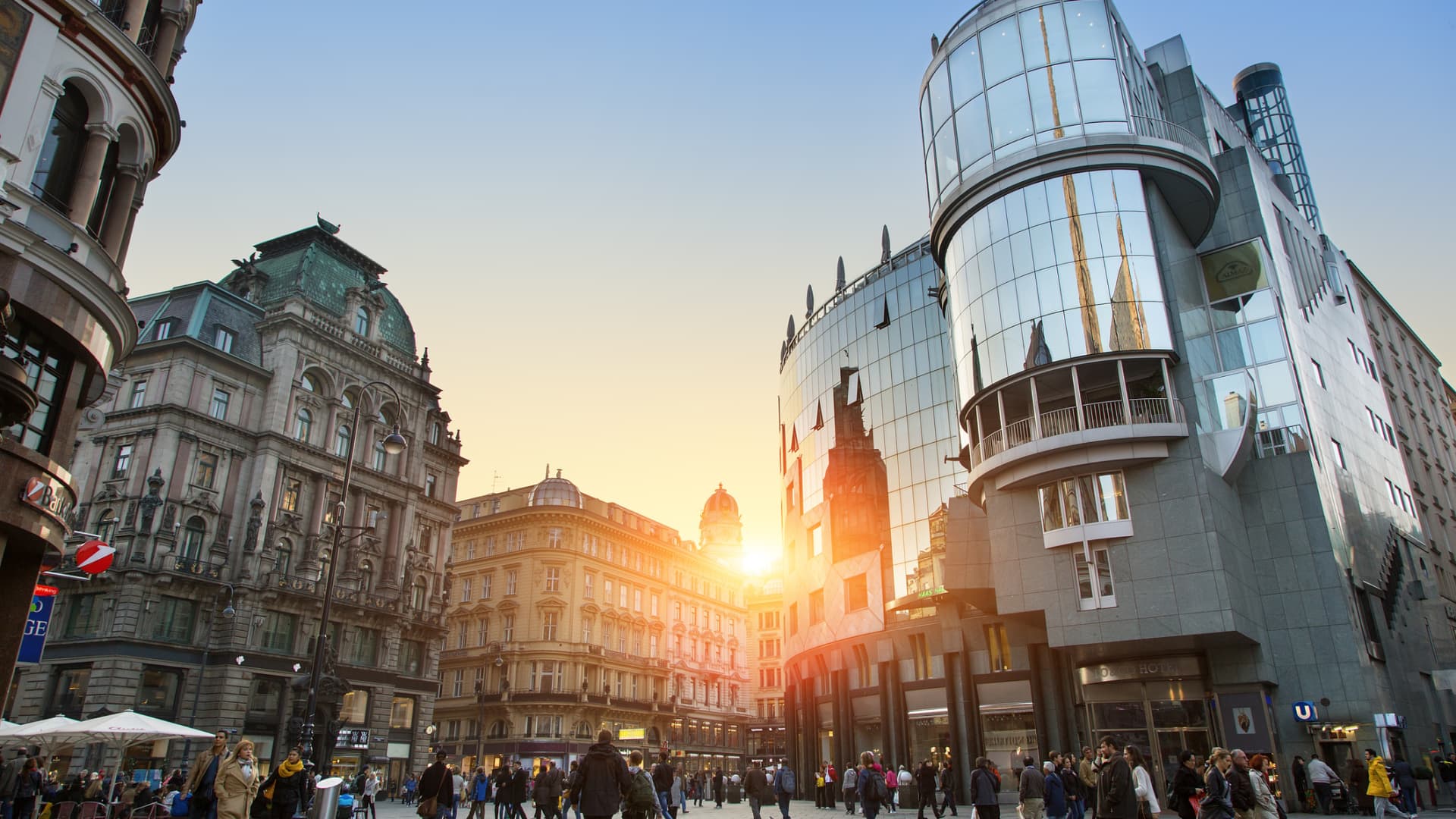World’s most livable cities: Vienna climbs back to its No. 1 spot. These are the biggest decliners


Vienna ranked first in 2018 and 2019, but was overtaken by Auckland, New Zealand, during the pandemic and slipped to 12th place in 2021, according to the Global Liveability Index 2022.
Sylvain Sonnet | The Image Bank | Getty Images
After two years, Vienna has overtaken Auckland as the world’s most livable city, according to a report by the Economist Intelligence Unit (EIU).
Vienna ranked first in 2018 and 2019, but was overtaken by Auckland, New Zealand, during the pandemic and slipped to 12th place in 2021, according to the Global Liveability Index 2022.
The EIU said that Auckland’s position on the index dipped to the 34th spot this year because of higher Covid-19 infection rates and strict border controls in 2021. Although lockdowns ended in New Zealand in December, well-vaccinated cities in Europe and Canada had begun easing restrictions earlier.
However, it’s unlikely that Auckland would’ve clinched the top position in this year’s ranking even without a pandemic, according to the EIU.
“Other cities falling was why Auckland was top last time. Without Covid, it would likely be top 10, but not number one,” said Simon Baptist, global chief economist at the research and advisory firm.
Five other European cities — Copenhagen, Zurich, Geneva, Frankfurt and Amsterdam — also made the top ten. Canada’s Calgary and Vancouver took the third and fifth spots respectively. Japan’s Osaka and Australia’s Melbourne shared 10th place — the only two “Asian” cities that made it to the top 10.
The 172 cities that were included in the rating were assessed on these categories: stability, health care, culture and environment, education and infrastructure.
Biggest decliners
Cities in New Zealand and Australia were the biggest fallers in the EIU’s livability ranking.
New Zealand’s capital Wellington dived by 46 places, while Australia’s Adelaide and Perth lost their 2021 positions in the top 10. They are now in the 30th and 32nd place respectively.
Australian and New Zealand cities snagged six of the top 10 spots last year, but were “much, much lower down” on this year’s list as their partial reopening coincided with the spread of the more contagious omicron variant, Baptist told CNBC’s “Street Signs Asia” on Thursday.
But the EIU is optimistic that these cities would bounce back.
“We can expect to see Australian and New Zealand cities moving up the rankings next year, when we do the next round of the survey. And this will be because they will have relaxed more of their Covid restrictions,” said Baptist.
Other cities in the region saw their rankings slip as well.
Singapore fell three spots to 37th place this year, while Hong Kong dropped to 62nd place from 49th last year.
“This is a long term change, it’s not just about Covid. That is part of it. But Hong Kong’s loss of connectivity is likely to be permanent,” said Baptist, citing the decline of cultural and political freedom in the city.
Russian cities plunged
Russia’s invasion of Ukraine saw Moscow’s livability ranking fall by 15 places, while St. Petersburg dipped by 13 spots, the EIU reported.
“Both cities record a fall in scores owing to increased instability, censorship, imposition of Western sanctions and corporates withdrawing their operations from the country,” the report said.
The war on Ukraine also affected the rankings of other Eastern European cities that have been facing political standoffs security threats, food and energy insecurities, and rising inflation, EIU said.
For example, Poland’s Warsaw and Hungary’s Budapest saw their stability scores slip as a result of rising diplomatic tensions, the EIU added.
Ukraine’s capital Kyiv was also excluded from this year’s report, and 33 new cities — 11 of them in China — were added.
The top 10
These are the world’s most livable cities and their scores, according to The Global Liveability Index 2022:
1. Vienna, Austria (99.1)
2. Copenhagen, Denmark (98.0)
3. TIE — Zurich, Switzerland (96.3)
3. TIE — Calgary, Canada (96.3)
5. Vancouver, Canada (96.1)
6. Geneva, Switzerland (95.9)
7. Frankfurt, Germany (95.7)
7. Toronto, Canada (95.4)
9. Amsterdam, Netherlands (95.3)
10. TIE — Osaka, Japan (95.1)
10. TIE — Melbourne, Australia (95.1)
This post has been syndicated from a third-party source. View the original article here.




